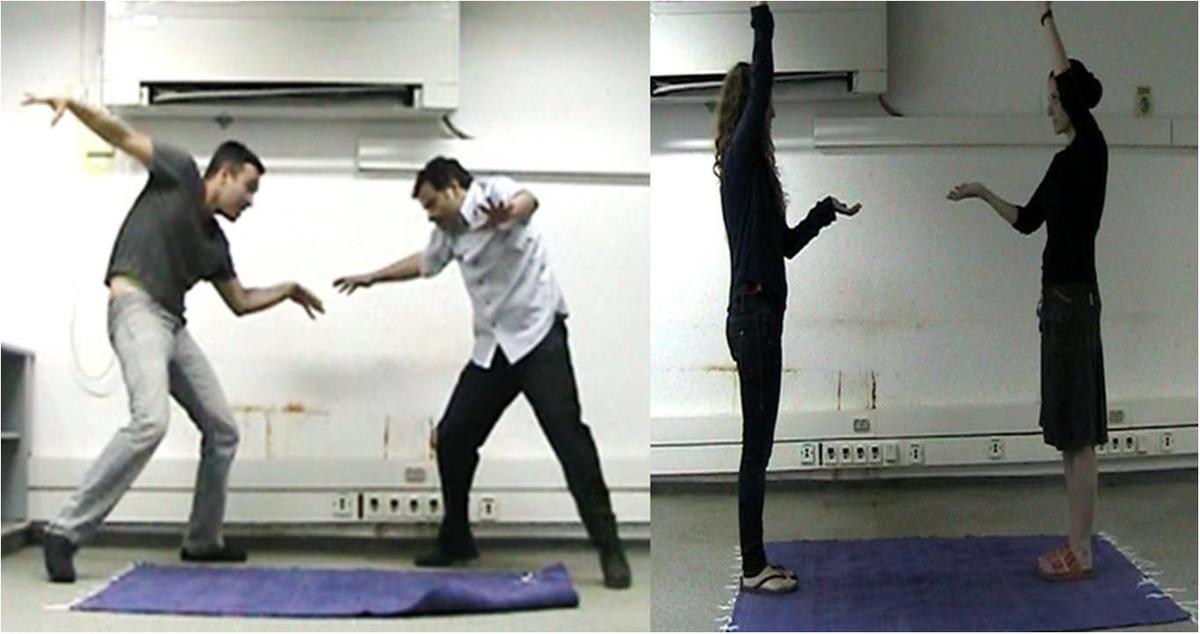Overview of Dance/Movement Therapy
Dance/Movement Therapy (DMT) uses movement to promote emotional, social, cognitive, and physical integration. It leverages the body-mind connection, using dance as a nonverbal language to express what words often cannot.
Key techniques in DMT include:
- Mirroring: The therapist mimics the client's movements to foster connection and understanding.
- Tracking bodily sensations: Clients are encouraged to notice and articulate what they feel in their bodies during movements, helping bridge physical sensations and emotional experiences.
- Improvisational movements: Clients express themselves freely, without structured choreography, allowing for exploration and release of emotions.
DMT sessions typically start with warm-up exercises, followed by specific activities like guided imagery or themed dances, and end with reflection and discussion.
This versatile approach addresses issues like anxiety, depression, self-esteem, and body image, inviting individuals to engage their whole being in a journey towards well-being.
Mental Health Benefits
Dance/Movement Therapy offers substantial mental health benefits backed by research. It's a therapeutic journey where movement becomes a conversation between mind and body, fostering healing and self-discovery.
Studies show DMT effectively alleviates stress, anxiety, and depression. A 2019 review found it improved mood, reduced depression symptoms, and enhanced overall quality of life in adults.1
DMT also enhances self-awareness, teaching clients to tune into bodily sensations – those often-missed cues of our subconscious. This awareness helps recognize early signs of anxiety or how movements can unlock buried emotions.
Through movement, clients learn coping skills for stress and emotional upheavals. These skills extend beyond therapy, empowering individuals in their everyday lives.
"DMT is particularly effective in treating Post-Traumatic Stress Disorder (PTSD). Movement becomes a gateway to release trauma lodged in the body, where traditional talk therapies might struggle."
Techniques like mirroring help build connection and safety, anchoring clients in the present.
In essence, DMT offers a transformative journey. It's about finding joy in your heartbeat, solace in your body's sway, and healing in your movements. It weaves together fragmented pieces of being into a harmonious, resilient whole.
Physical Health Benefits
Dance/Movement Therapy offers numerous physical health benefits. It promotes increased strength, working different muscle groups through varied movements.
Regular participation enhances flexibility, allowing for freer movement in daily life. This can be particularly beneficial for those dealing with stiffness from sedentary lifestyles or aging.
DMT improves coordination, which can translate to better balance and agility, potentially reducing fall risk, especially in older adults.
Additional Physical Benefits:
- Reduces muscle tension, a common physical manifestation of stress and anxiety
- Facilitates relaxation and promotes physical calmness
- Serves as an effective alternative for managing chronic pain
- Valuable in cancer care, providing holistic support during treatment
- Improves gait and stability in Parkinson's disease patients
DMT also benefits a broader spectrum of physical conditions, from easing somatic manifestations of PTSD to supporting physical well-being in those with dementia. It's a blend of wellness that expands the boundaries of physical health through movement.
Effectiveness and Research
Research supports the effectiveness of Dance/Movement Therapy (DMT) in treating various conditions. A 2019 meta-analysis of clinical trials with 2,374 participants found DMT significantly improves anxiety, depression, quality of life, cognition, and interpersonal skills.2
For depression specifically, a 2019 review of eight clinical trials with 351 adults showed high to moderate-quality evidence supporting DMT as an effective treatment.3
DMT's Effectiveness in Various Conditions:
| Condition | Research Findings |
|---|---|
| Parkinson's disease | Enhanced gait (2018 review of 40 studies)4 |
| Cancer care | Improved vigor and quality of life in breast cancer patients5 |
| Hypertension | Significantly lowered blood pressure6 |
| Chronic heart failure | Enhanced exercise capacity and quality of life7 |
Dance therapists assert that DMT's efficacy stems from its ability to bypass verbal limitations, tapping into non-verbal channels for emotional and physical healing. By focusing on nonverbal communication and physical expression, DMT can inspire breakthroughs where traditional talk therapies might falter.
This substantial and varied evidence establishes DMT as a credible and powerful therapeutic modality, bridging physical expression and emotional insight.

Dance/Movement Therapy offers a transformative approach to healing, connecting mind and body through expressive movement. By engaging in this therapeutic practice, individuals can experience profound emotional and physical benefits, leading to a more integrated sense of well-being.
- Koch SC, Riege RFF, Tisborn K, et al. Effects of Dance Movement Therapy and Dance on Health-Related Psychological Outcomes. A Meta-Analysis Update. Front Psychol. 2019;10:1806.
- Karkou V, Aithal S, Zubala A, Meekums B. Effectiveness of Dance Movement Therapy in the Treatment of Adults With Depression: A Systematic Review With Meta-Analyses. Front Psychol. 2019;10:936.
- Karampoula E, Panhofer H. The circle in dance movement therapy: A literature review. The Arts in Psychotherapy. 2018;58:27-32.
- Sharp K, Hewitt J. Dance as an intervention for people with Parkinson's disease: A systematic review and meta-analysis. Neurosci Biobehav Rev. 2014;47:445-456.
- Ho RT, Fong TC, Cheung IK, Yip PS, Luk MY. Effects of a short-term dance movement therapy program on symptoms and stress in patients with breast cancer undergoing radiotherapy: a randomized, controlled, single-blind trial. J Pain Symptom Manage. 2016;51(5):824-831.
- Liu X, Clark J, Siskind D, et al. A systematic review and meta-analysis of the effects of Qigong and Tai Chi for depressive symptoms. Complement Ther Med. 2015;23(4):516-534.
- Gomes Neto M, Menezes MA, Carvalho VO. Dance therapy in patients with chronic heart failure: a systematic review and a meta-analysis. Clin Rehabil. 2014;28(12):1172-1179.
























